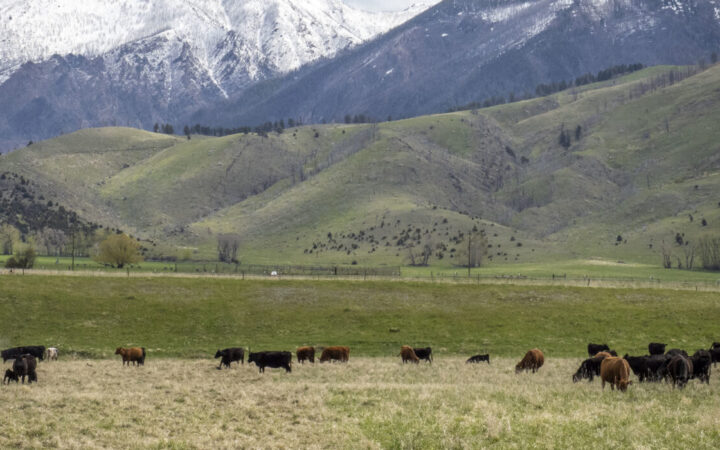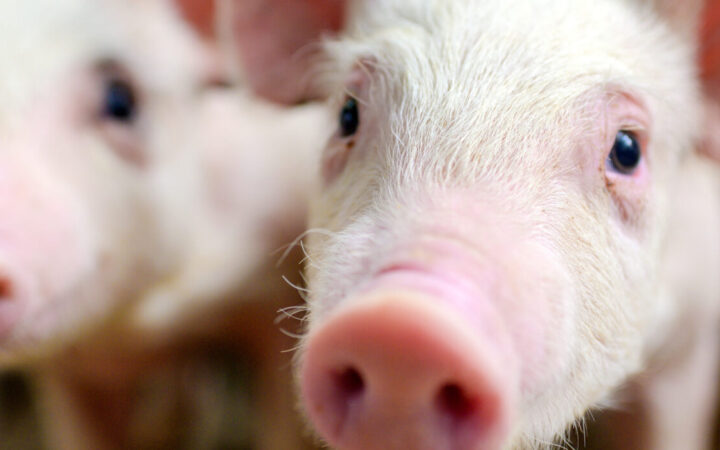This report analyzes the role that manure biogas plays in a climate mitigation strategy, specifically tackling its environmental justice impacts and how policymakers can ensure an effective and equitable climate future.
Introduction
The world is on track to exceed a 2° C increase during the 21s century, an outcome scientists have described as catastrophic. Direct impacts on the food and agriculture sectors will be far- reaching. Already, climate-related impacts to farming include “observed changes in extremes such as heatwaves, heavy precipitation, droughts, and tropical cyclones.” These changes impact both crop and livestock production. Experts predict that further warming will continue to dramatically affect the “global water cycle and its variability, global monsoon precipitation and the severity of wet and dry events.”
In regions like eastern North Carolina, home to the United States’ top two pork producing counties, producers will experience more regular hurricanes of greater magnitude. California’s Central Valley, which provides cropland for over 250 different crops and houses 80 percent of the state’s milk cows, already relies on the second most over-pumped aquifer in the nation while facing substantially drier conditions as a result of climate change. These impacts will disproportionately harm vulnerable populations in addition to historically marginalized farmers, who will be the first to lose their livelihoods. Climate change will force agriculture to adapt—either now, through innovation to mitigate increased warming, or later, as regional climates become incompatible with existing models of food production.
It is clear that the food and agriculture sector will bear significant impacts from climate change, but this sector is also a major contributor of greenhouse gas (GHG) emissions. Animal agriculture, in particular, is responsible for approximately 20 percent of global GHG emissions and 57 percent of food related emissions. Animal agriculture’s primary contributions to climate change result from methane and nitrous oxide emissions. Methane has a global warming potential 28 to 36 times that of carbon dioxide on a 100-year timescale and nitrous oxide has a global warming potential 265 to 298 times that that of carbon dioxide on a 100-year timescale. Moreover, while emissions from the energy sector have decreased as a result of emission reduction policies, GHG emissions from agriculture have increased over recent decades with this trend projected to continue. Consequently, addressing emissions from agriculture is increasingly critical.
One approach to reducing atmospheric GHGs from livestock involves capturing emissions from manure through the use of anaerobic digesters. Proponents of this approach herald it as a win-win. Manure biogas systems reduce GHG emissions by capturing GHGs that would otherwise be emitted and can displace the use of fossil fuels. Additionally, this new fuel source (biogas) creates a new revenue stream from a former waste product. In a 2017 press release announcing federal funding to help farmers construct biogas systems, the United States Department of Agriculture (USDA) articulated the conventional wisdom of the emissions reduction claim, stating: ”Anaerobic digesters actually provide two-fold greenhouse gas reduction. First, they capture methane that otherwise would be emitted from the manure into the atmosphere. . . . Second, by utilizing the trapped biogas as a renewable energy source, digesters displace the need for additional fossil fuels.”
While these claims sound promising, they omit important nuance. Animal agriculture generates emissions throughout the operation—from land conversion to enteric fermentation (the emissions generated from ruminant burps), to transportation. It is imperative that policymakers and others recognize that manure biogas systems reduce emissions from only one part of this system—manure management. At the same time, manure biogas systems rely on the ongoing production of large quantities of livestock manure—the source of manure management emissions—to function. Espousing these systems to the exclusion of other emissions mitigation measures can foreclose the potential to make important modifications throughout the livestock life cycle. Ultimately, this reinforces current conventional models of livestock production at the expense of farmers using more sustainable production models.
Currently, policymakers are dedicating increasing amounts of public funding and attention to manure biogas as compared to other policy interventions that can reduce livestock emissions. Recently, the American Biogas Council suggested that the US could support at least another 13,740 potential new biogas systems, including 8,300 on farms, in addition to 4,000 for wastewater, 1,000 for food scraps, and 440 for landfills. Biogas systems are expensive to construct and operate. They require substantial investment into long-lasting, durable infrastructure such as pipeline interconnections and facilities upgrades. As more public and private resources are dedicated to this infrastructure, the incentives to continuing using these systems will increase.
To date, many discussions on the benefits of manure biogas fail to account for the concerning and negative implications associated with widespread adoption of manure biogas systems. For example, the climate implications resulting from the need for these systems to engage in long-term production of massive quantities of livestock manure (or other biosolids) to recoup the fixed upfront costs of installation and continued revenue generation is rarely addressed. To illustrate this point, the public programs subsidizing production and sale of biomethane from these operations provide incentives for the ongoing production of the core input—livestock manure—even as climate scientists warn that greater reductions from animal agriculture are necessary. Promoting widespread investment in and adoption of manure biogas systems will inevitably impact livestock agriculture for years, if not decades, into the future, creating potential barriers for more substantial and systemic climate mitigation measures for the sector.
Moreover, because manure digesters are typically feasible only for industrial-scale livestock operations, the largest confined animal feeding operations will reap the financial and public relations benefits that accompany the installation of digesters. This is not a new trend: today and historically, large-scale commercial operations have benefited from the lion’s share of federal funding for agriculture. Due to decades of discriminatory lending by USDA, the majority of these operations are owned by white farmers. Racism and discriminatory lending by the federal government over the past century has resulted in a dramatic loss of Black-owned land and farms across the board (one recent analysis calculated this dispossession to total $326 billion). This disparity is even more pronounced for larger agricultural operations. However, in some parts of the country, the substantial environmental impacts generated by these larger agricultural operations disproportionately harm Black, Indigenous, and communities of color.
Anaerobic digesters, in contrast to alternative mitigation measures, are an appealing means to reduce livestock emissions in industrial animal agriculture because they require no change to the structure of conventional livestock operations and manure management. On the contrary, these systems function by ensuring the continuity of both the existing system and its beneficiaries. This fails to consider and plan for the systemic changes needed in conventional operations and manure management due to the current, near, and long-term impacts of climate change. Consequently, policymakers should immediately begin to proactively plan for the future by assessing the full range of suitable mitigation measures and supporting those that will provide for long-term sustainability and climate mitigation. As part of this process, policymakers must also critically evaluate the environmental justice impacts to neighboring communities and equity implications of elevating biogas systems over other mitigation measures.
This report analyzes and evaluates the extensive adoption and support of manure anaerobic digesters with a specific focus on the resulting equity implications, a goal explicitly aligned with two executive orders issued by the Biden Administration—Executive Order 14008: Tackling the Climate Crisis at Home and Abroad and Executive Order 13985: Advancing Racial Equity and Support for Underserved Communities Through the Federal Government. The report begins by surveying existing funding opportunities for manure biogas systems and the fuels they produce. It then addresses the direct environmental impacts of installing and operating these systems, including a brief discussion about the methodology used to account for life cycle emissions. The next section evaluates alternative methods to reduce livestock emissions, indirect environmental impacts of adopting manure biogas as the primary means to reduce GHG emissions from livestock operations, and the equity impacts. The report concludes with a set of recommendations for policymakers and regulators as they consider the role this technology should play in shifting livestock agriculture toward a more equitable, just, and climate-smart model.
Acknowledgements
This report was produced by the Center for Agriculture and Food Systems at Vermont Law and Graduate School. This report was made possible with support from the National Agricultural Library, Agricultural Research Service, US Department of Agriculture. The report benefited from significant writing, input, and editing support from several members of the Center for Agriculture and Food Systems at Vermont Law and Graduate School, including Laurie J. Beyranevand, Director and Professor of Law; Lihlani Nelson, Associate Director and Research Fellow; Claire Child, Assistant Director and Research Fellow; Whitney Shields, Project Manager; and Molly McDonough, Environmental Communications Specialist.
Suggested Citation
Ruthie Lazenby, Vt. L. & Grad. Sch. Ctr. for Agric. and Food Sys., Rethinking Manure Biogas: Policy Considerations to Promote Equity and Protect the Climate and Environment (2022), https://www.vermontlaw.edu/sites/default/files/2022-08/Rethinking_Manure_Biogas.pdf.



